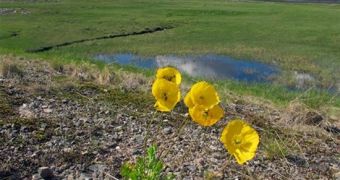A new report published in the scientific journal Nature Climate Change argues that, because of the environmental shifts brought about by climate change and global warming, future generations are nothing if not likely to have a slightly greener Arctic landscape to gaze upon.
The groups of international scientists who pieced together this study explain that, all things considered, the predicted increase in global average temperatures will translate into green plants' being able to prosper further north.
In other words, northern permafrost might soon turn into lush forests. Needless to say, this phenomenon is likely to upset natural balance.
The green plants now working their way into the circumpolar Arctic are mainly tall shrubs and trees, the researchers explain. By the looks of it, their gaining ground further north is more easily observable in Eurasia than in North America.
ZME Science informs us that, according to satellite images made available to this team of scientists by NASA researchers, green plants have already moved up north by as much as seven degrees latitude in just 30 years' time.
Moreover, it appears that several climate model simulations hint towards the idea that, as early as the end of the century, said type of vegetation is likely to move further north by about 20 degrees latitude.
ZeeNews quotes specialist Ranga Myneni, who commented on the findings of this report as follows:
“Higher northern latitudes are getting warmer, Arctic sea ice and the duration of snow cover are diminishing, the growing season is getting longer and plants are growing more. Higher northern latitudes are getting warmer, Arctic sea ice and the duration of snow cover are diminishing, the growing season is getting longer and plants are growing more.”
“It's like Winnipeg, Manitoba, moving to Minneapolis-Saint Paul in only 30 years,” one other researcher named Compton Tucker maintains.
Interestingly enough, the findings of this report hit the general public shortly after one other study showed how climate change and global warming would eventually open up new shipping lanes in the Arctic.

 14 DAY TRIAL //
14 DAY TRIAL //